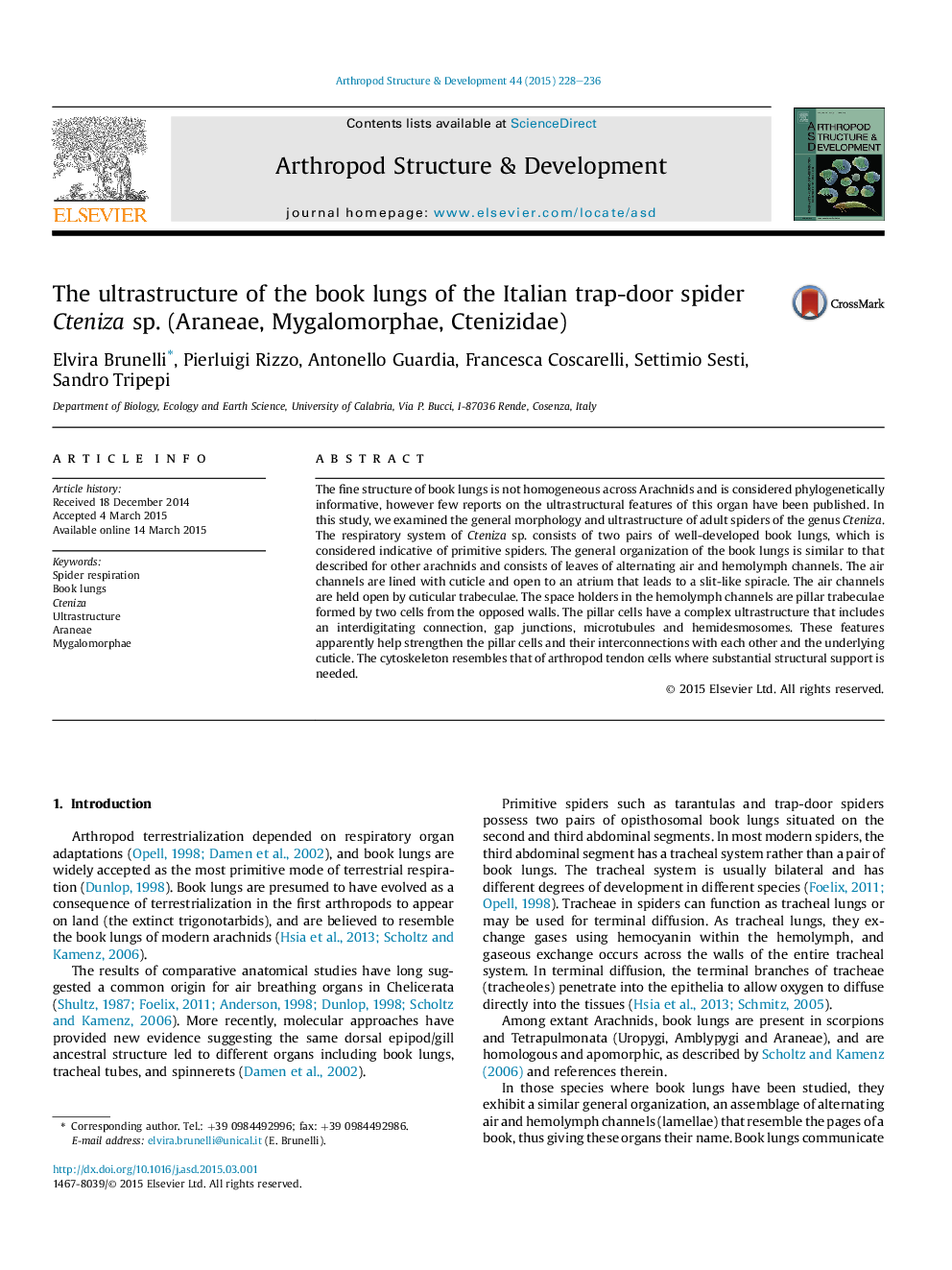| Article ID | Journal | Published Year | Pages | File Type |
|---|---|---|---|---|
| 2778585 | Arthropod Structure & Development | 2015 | 9 Pages |
•The book lung ultrastructure of Cteniza sp. is much like that in other spiders.•The book lung consists of alternating air and hemolymph channels.•Two types of trabeculae hold open the air channels.•In the hemolymph channels, the space holders are pillar trabeculae formed by two cells.•The pillar cells are joined by interdigitating connections, microtubules and hemidesmosomes.
The fine structure of book lungs is not homogeneous across Arachnids and is considered phylogenetically informative, however few reports on the ultrastructural features of this organ have been published. In this study, we examined the general morphology and ultrastructure of adult spiders of the genus Cteniza. The respiratory system of Cteniza sp. consists of two pairs of well-developed book lungs, which is considered indicative of primitive spiders. The general organization of the book lungs is similar to that described for other arachnids and consists of leaves of alternating air and hemolymph channels. The air channels are lined with cuticle and open to an atrium that leads to a slit-like spiracle. The air channels are held open by cuticular trabeculae. The space holders in the hemolymph channels are pillar trabeculae formed by two cells from the opposed walls. The pillar cells have a complex ultrastructure that includes an interdigitating connection, gap junctions, microtubules and hemidesmosomes. These features apparently help strengthen the pillar cells and their interconnections with each other and the underlying cuticle. The cytoskeleton resembles that of arthropod tendon cells where substantial structural support is needed.
